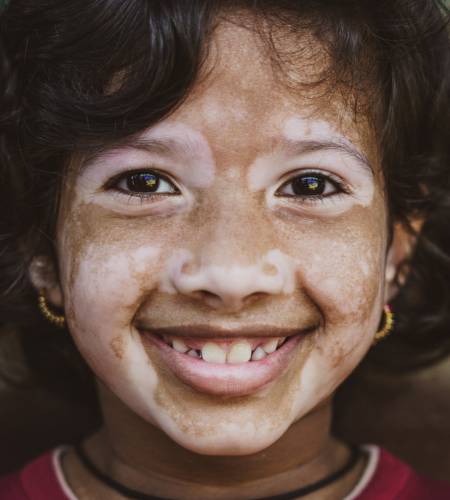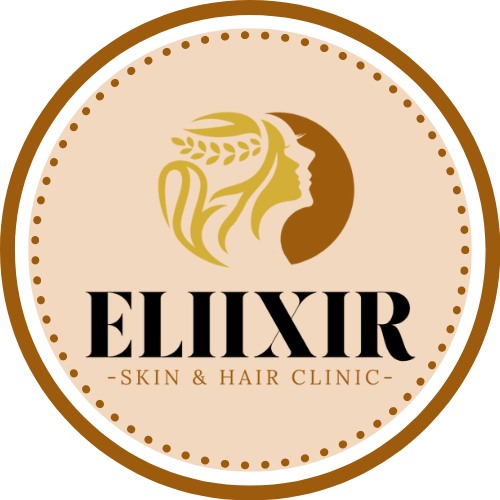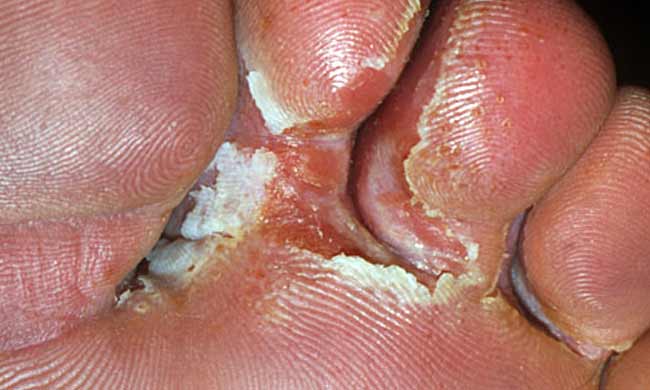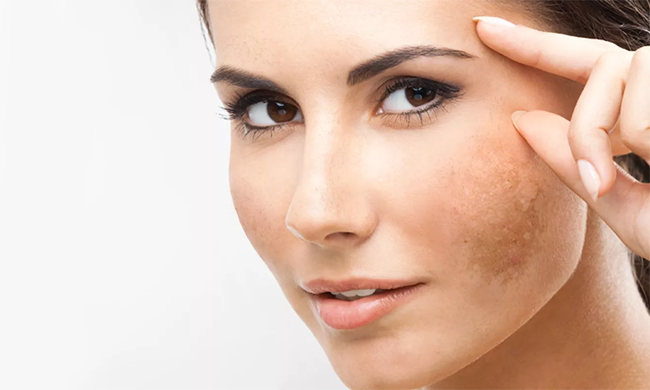For Booking - (+91) 91520 10115

Understanding Vitiligo
Unravelling its mysteries, treatments, and a chance of victory
Vitiligo is a disease that affects several people, making an emotional journey of resilience and self-discovery. It may be a condition that can have a huge impact on life, but we simply desire to assist those individuals facing it. Although vitiligo is widespread, mystery is still everywhere for many people. We’ll touch on vitiligo disease symptoms, treatment options, and what it’s like for the people coping with it. Even though it may take some time for patches to be cleared, the good thing is there are treatment options and grounds for hope, you just need the guidance of a skilled dermatologist like Dr. Shikhar Chaube to help you through vitiligo and treatment. This article takes you on a journey to the truth behind vitiligo for your understanding. We hope this article will give you the knowledge and confidence to experience facing vitiligo with hope and optimism. Don’t forget that you are not alone on this trip.
Contact us to schedule your Treatment today!
Procedure VideosUnderstanding Vitiligo
Imagine one beautiful morning when you open your eyes and find that parts of your skin have suddenly depleted because an unknown malady had attacked the pigment-producing cells and left stark white patches behind. This is what people with vitiligo have to go through. Although the specific cause of vitiligo is still unknown, it is thought to be an autoimmune disorder whereby the body’s immune system mistakenly attacks and eliminates the melanocytes that are responsible for the production of melanin. This pigment gives the skin its color.

Vitiligo disease symptoms
A phenomenal sign of vitiligo is present, which are depigmented patches that stand out on the skin. These vitiligo patches may take a different shape and size and are mostly seen on the exposed skin areas, like the face, arms, hands, lips, and the solar side of the feet. It is not only the physical process of the disease that causes a lot of psychological discomfort to the affected people but also the way the disease changes the way people see themselves. People might get very insecure with such a visible condition. They feel like they are different from others, and that situation can lead to an anxiety attack or even a depression case for some.
Vitiligo disease treatment options
When it comes to vitiligo treatment, the purpose of the treatments is also as different as the individuals who experience it. Unfortunately, till now there is no healing cure for vitiligo, however, various treatment options are available which can be used to manage the condition and re-pigment the affected skin.
Topical Corticosteroids
These are anti-inflammatory creams that we apply to the skin to normalize the pigmentation. Mostly, they are prescribed in vitiligo treatment.
Topical Calcineurin Inhibitors
These drugs reduce the immune system’s activity and help minimize skin inflammation and repigmentation.
Phototherapy
The therapy consists of exposing the skin to UV (ultraviolet) light that can be achieved either with the help of natural sunlight or artificial lamps. Phototherapy initiates melanocytes (skin-producing melanin cells) to re-pigment the skin.
Excimer Laser
This type of laser helps to stimulate melanin production in the pigment cells called melanocytes and the UVB lamp delivers the ray to the affected areas.
Depigmentation
In cases of wide-scale skin depigmentation, a solution may be depigmentation therapy. This adaptive approach involves using topical substances to reduce the pigmentation in the rest of the skin to make it uniform with the bleached areas.
Surgical Treatments
The surgical procedures options involve pigmented skin grafting where pigmented skin is transplanted to areas deprived of pigment and melanocyte transplantation where melanocytes are transplanted from the healthy skin to the vitiligo-affected areas.
Sun Protection
As vitiligo automatically leaves patches on the skin more prone to sunburn and damage, protection using sunscreen and clothing is a must when exposed to sunlight.
Emotional Support
As life with vitiligo is physically traumatic, it can be very challenging emotionally to deal with its effect on appearance. Talking about principles with friends, family or therapist can help to smooth the situation.
People with vitiligo need to cooperate with dermatologists to set up the proper care plan with the consideration of personal needs and objectives. Dr. Shikhar Chaube who is not only educated but also an experienced doctor with over five years of expertise is the doctor in charge of Eliixirskinhairclinic and provides the most excellent treatment for all of our patients. Moreover, the ongoing work of dermatology researchers could be the key to bringing in new, more efficient, and imaginative management of the condition in the future.
Living with Vitiligo
Living with vitiligo is more than just coping with the physical changes – it is about accepting the changes and embracing self-love within. Self-acceptance and confidence building is not an easy process for some, but it is extremely liberating. Through groups of support, online community, and advocacy actions people with vitiligo are sharing their own stories, raising awareness, and challenging society regarding beauty and perfection norms.
Other Treatments Available
Eczema:
A persistent disease of the skin that causes red, scaly, and inflamed patches. Eczema is not limited to any age group and is considered to be associated with both, genetic and environmental factors. Treatment, the goal of which is the relief of symptoms and prevention of flare-ups through moisturizing, use of topical corticosteroids, avoiding triggers, taking prescription medications, trying wet wrap therapy and phototherapy, taking antibiotics or antifungals, managing stress and avoiding scratching, can be very successful.
Fungal infection:
Mycosis is a fungal infection caused by a fungus that may affect the outer tissue like the skin, nails, hair, and mucous membranes. The remainder of the treatment encompasses antifungal pills, antifungal shampoo, nail cures, and combined therapy. Regular check-ups and attending appointments with a dermatologist for scheduled screenings are a preventive measure that manages and eradicates fungal infections.
Nail infection:
Fungal infections called onychomycosis or nail infections are those in which the nail’s color, structure, and consistency get affected. The treatment dermatologists resort to medicine, debridement, laser therapy, surgery, and preventive care. These are a few to the list of the options.
Psoriasis treatment:
The skin surface of a patient with psoriasis is typically peppered with red, scaly patches. However, there is no cure, and psoriasis sufferers will have to live with indefinite symptoms. However, psoriasis treatment includes topical medications like culprits, UV light therapy, systemic medications, moisturizers, lifestyle changes, and frequent monitoring to help alleviate the medical condition.
Melasma treatment:
Melasma also is referred to as chloasma. It is a type of skin disorder that causes the appearance of dark patches on the face. Sun protection, vegetable-derived creams, chemical peels, laser therapy, and combination therapy are some of the melasma treatments available. Consequently, following the skincare routine and the medical advice of a dermatologist are necessary for an optimal outcome to be achieved.
Being a patient with vitiligo might be difficult but there is always hope is the main thing to keep in mind. Currently, there are trends in research that can give us more insight into the causes of vitiligo and introduce more successful methods of treatment. Moreover, the presence of persons with vitiligo in the media and popular culture is going hand in hand with the development of diversity and changing the standards of beauty. Rest assured you are not alone and help is always here for you.
In conclusion, vitiligo goes beyond a condition of the skin; it is a process of learning to be positive, confident, and optimistic. Consulting a highly qualified and experienced dermatologist, such as Dr. Shikhar Chaube, having a positive self-evaluation can be very helpful for those who experience problems with forms of vitiligo disease. It is our shared duty to do away with the taboos and social biases around vitiligo and establish a better, more suitable environment. Togetherness with such vitiligo patients is worth its salt in helping society discover uniqueness as well as value diversity. When it comes to the tapestry of humanity, our diversity is the finest, thus we must love and value every strand of uniqueness that connects our souls. To achieve that, we may just realize the unsuspected state of power, strength, and beauty in our different hues.
Questions & Answers
Frequently Asked Questions
What is vitiligo caused by?
- The most appropriate treatment for vitiligo always depends on the personal age, the severity of loss of color, and other factors. Generally accepted treatment is using topical corticosteroids, phototherapy oral drugs, and surgical procedures like skin grafting or melanocyte transplantation. The efficacy of intervention depends on the individual and in each case it is the treatment’s effectiveness level.
What makes vitiligo worse?
These types of factors as ultraviolet ray effects, stress, skin injuries, and products that contain chemical substances like cosmetics and masks would worsen the form of the disease. On top of that, the persistent subjacence of medical factors or the underlying disease could be the element that inflames the condition further in the human body.
What are the 3 symptoms of vitiligo?
The most characteristic symptom of vitiligo is the loss of skin pigmentation or making of so-called “white spots” which appear as light or white depigmented areas. Aside from the mentioned above, one may also be affected by premature graying of hair even on the scalp, eyebrows, eyelashes, and beard as well as changes in the color of the mucous membranes for instance the lips and the inner part of the mouth.
Can vitiligo be harmful?
Whilst vitiligo itself is not harmful nor contagious, it can highly affect psychologically and emotionally the person experiencing it due to its external appearance. Furthermore, this can affect significantly how people with vitiligo see the self and their images. Furthermore, having vitiligo may also cause to getting more sunburn in unpigmented areas, thus sunscreen will be very necessary and regular skin reviews by a skilled healthcare expert should be undertaken.




